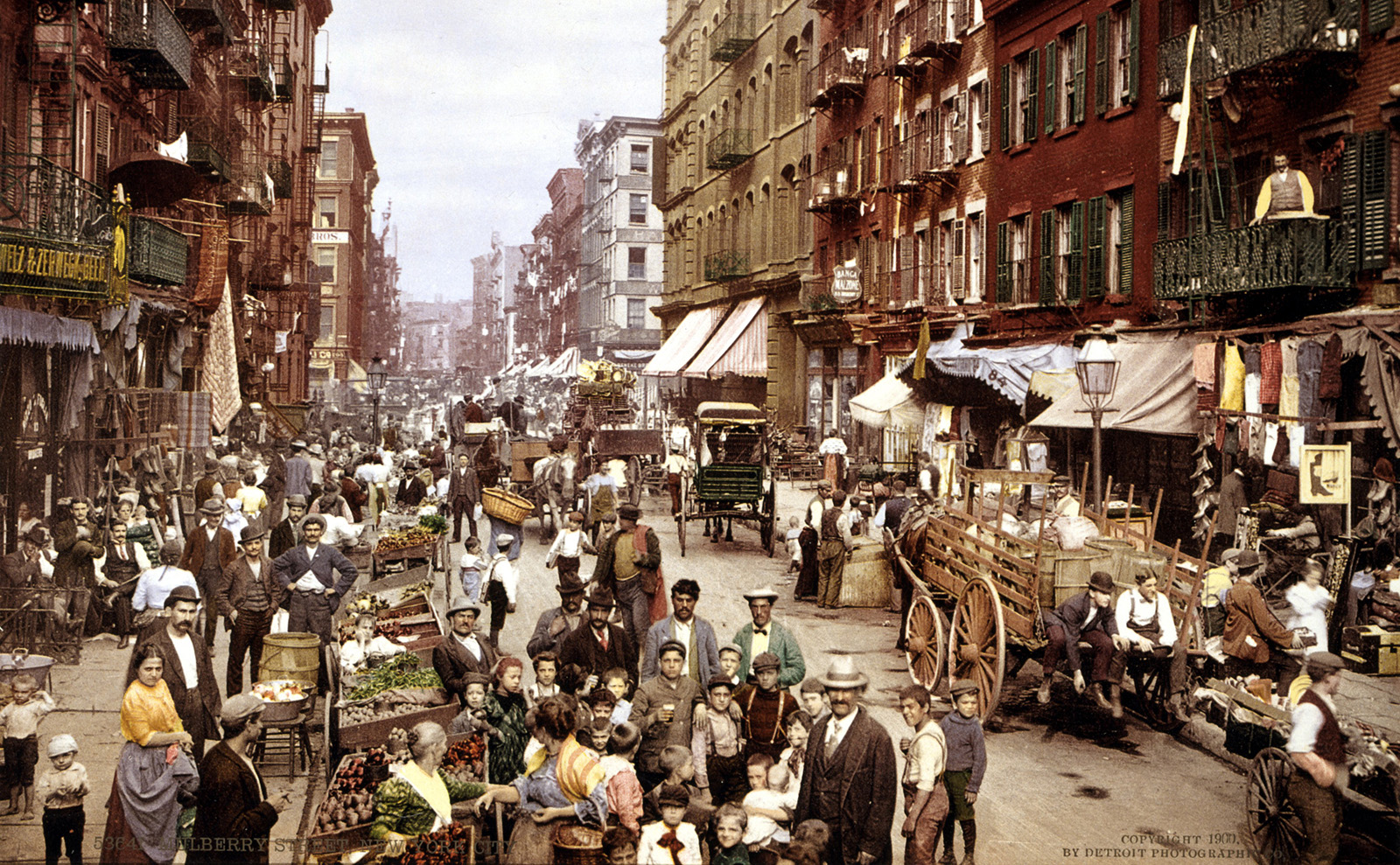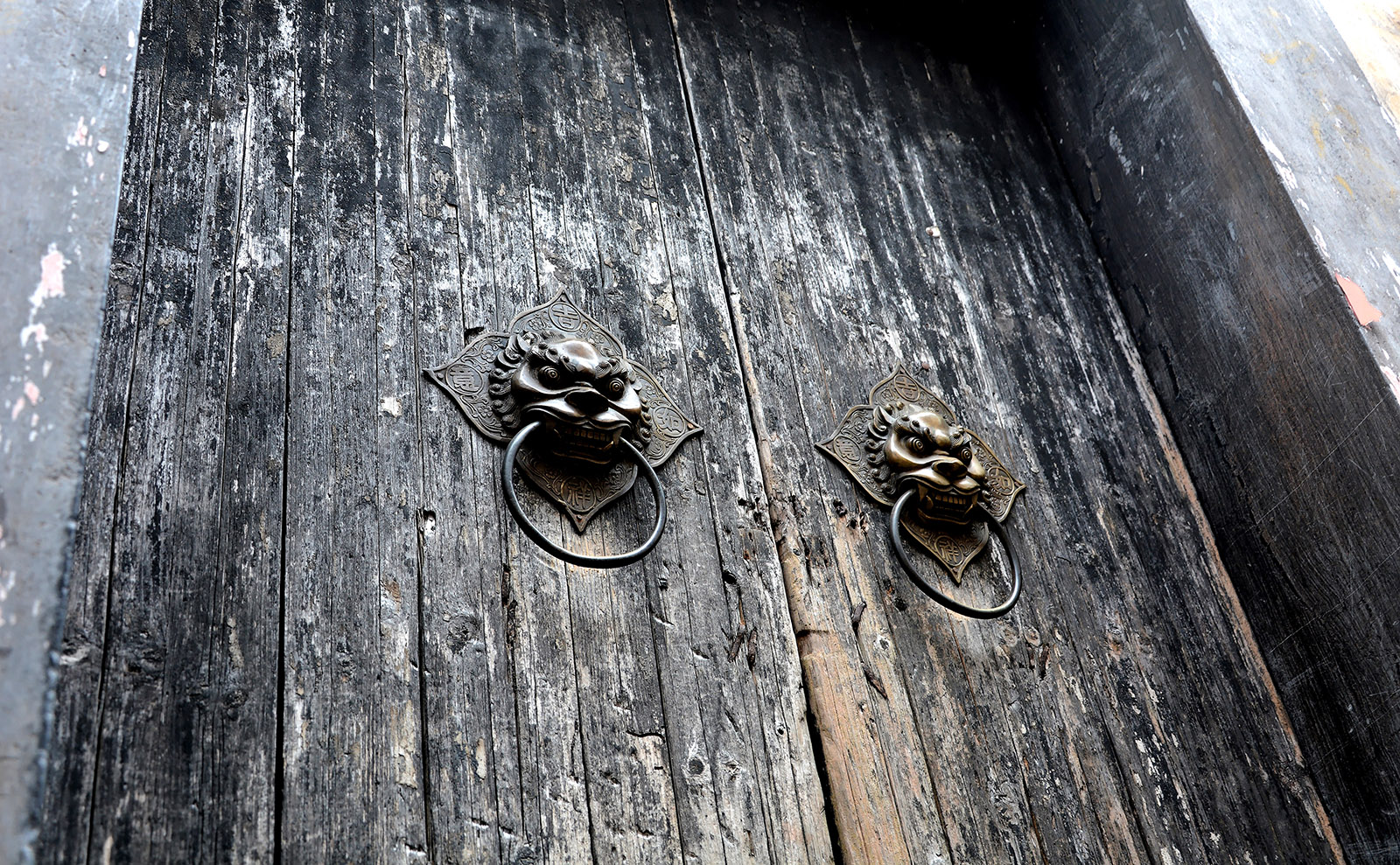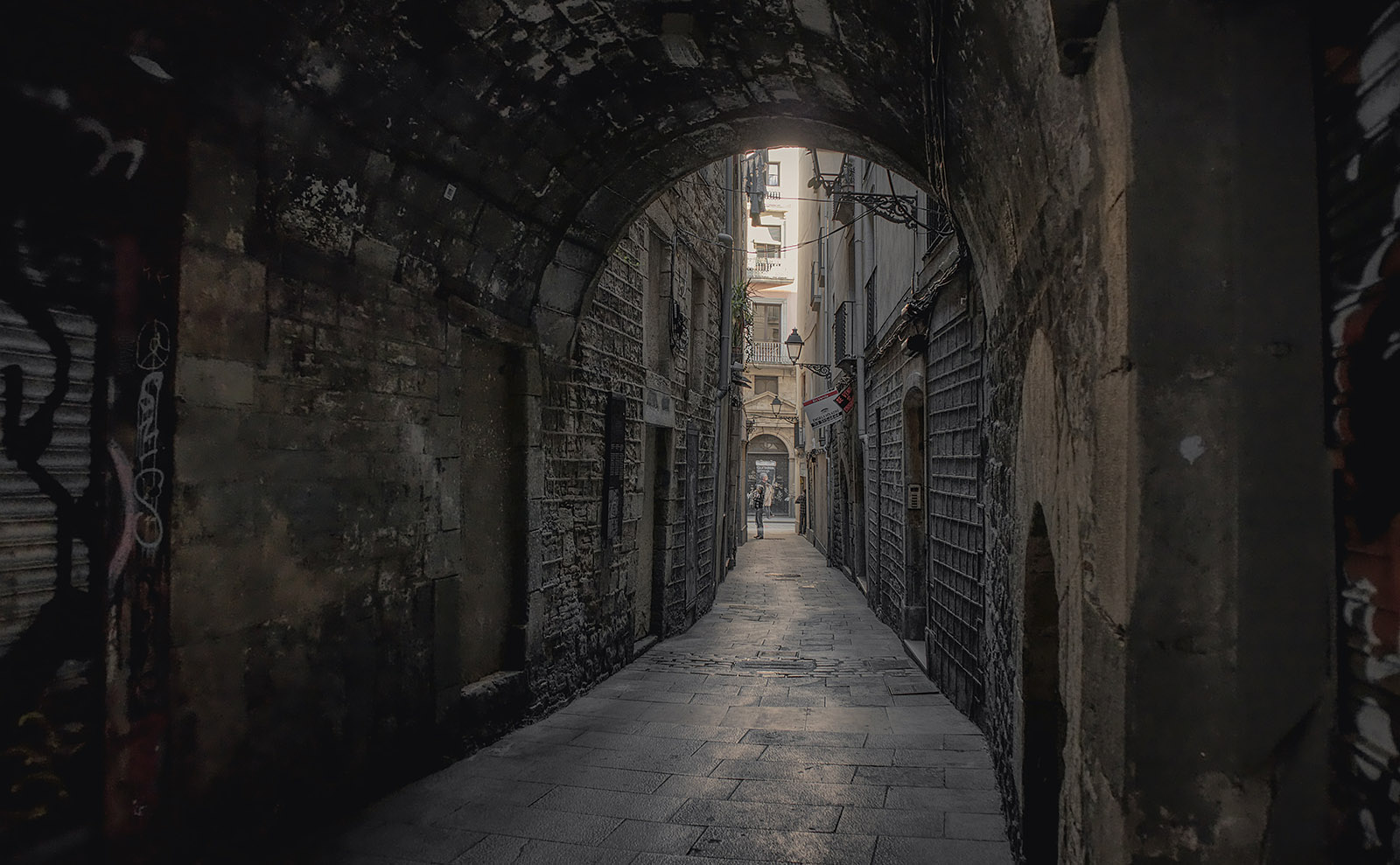
Armchair travel around the world!
Start your reading adventures with our FREE Reading Atlas.

- Around the World in 14 Books
- 7 Thrilling Book Series
- 6 Audiobooks That Are Like Theater For Your Ears



The best way to learn the ins and outs of someone’s life is to be by their side while it happens. The next-best way is to sit somewhere cozy — a pub or a tea house, perhaps — while they unspool their life stories over a brewed beverage and some snacks.
The narratives spun in good company don’t follow the path of least resistance. Instead, they meander from event to event, jump around in time, and introduce you to people of incidence and consequence.
These books do the same: In telling their primary narrative, they meander into the past, take side routes to add color and share the stories of other characters and places along the way. After all, we are all of us a collection of our stories.


Prepare to meet three remarkable women: a 16-year-old in Tokyo, a middle-aged Japanese-American in British Columbia, and a Zen Buddhist nun, who also happens to be 104 years old and an anarchist. They populate a story that’s all about the small moments that add up to the meaning of life.
Ruth is a former New Yorker now living in rural Canada. One day, she finds a mysterious diary and letters inside a Hello Kitty lunchbox on the beach — part of the detritus from the 2011 tsunami that struck Japan. Its author is Nao (pronounced ‘Now’), a teenager living in Tokyo. She’s bullied, lonely, disillusioned, and emotionally abandoned by her father, and the reasons for all of this slowly become clear via her diary entries.
The only person in her life who doesn’t let her down is her elderly great-grandmother (and radical feminist) Jiko. She lives in a Zen temple on a mountain and delivers delightful moments of levity and beauty to the narrative.
As Ruth reads Nao’s words on the other side of the ocean, she slowly grows attached to the girl, even though their relationship is out of sync — the events Ruth experiences in the present are the plot points of Nao’s past. So what is happening to Nao now?
Mystery, coming-of-age tale, family saga; this novel is a moving examination of the various meanings of time and how we choose to spend our precious days. {more}
Old Jiko is super careful with her time. She does everything really really slowly, even when she’s just sitting on the veranda, looking out at the dragonflies spinning lazily around the garden pond. She says that she does everything really really slowly in order to spread time out so that she’ll have more of it and live longer, and then she laughs so that you know she is telling you a joke. — Ruth Ozeki

This is a sweeping, multi-generational family saga. It’s the story of one eventful summer and the ripple effects of the aftermath, exploring how family mythology is created from love and loss and lies and secrets.
This tale is carefully woven together to tell stories within stories that spiral and twist into intricate patterns as a web does — and as families do. Its focus is on our heroine and narrator Lala Reyes and the members of her extended family.
When we meet Lala, she’s gearing up for the boisterous family’s annual road trip from Chicago to Mexico City. She is a sharp observer, and we see the places she visits — Mexico City, Chicago, San Antonio — with precise and delighted attention to detail.
There’s a touch of magical realism— and the characters often have a loose relationship with the truth — so the individual stories within the narrative take on the sheen of fairy tales. As Lala matures, she comes to see how the women in her life cling to their past hurts and resentments like heirlooms. To break out of this family curse, Lala must understand how the people she loves became the people that they are. {more}
The Circus Garibaldi consisted of a zebra-striped mule hauling an ancient oxcart overloaded with canvas backdrops of airplanes, madonnas, and invented Tibetan landscapes. The company included a lady photographer, a Mayan family of acrobatic clowns, a gypsy accordionist/percussionist, a dancing raccoon that told fortunes, and the singer Pánfila Palafox. The day they arrived you could not speak without the melodramatic accompaniment of the wind. — Sandra Cisneros

Our heroine Sirine is an Iraqi-American chef with blonde hair, green eyes, and a heart she’s kept carefully tucked away from harm. When she meets Han, an Iraqi literature professor in exile from his home country, she allows herself to fall joyously, recklessly in love.
As Sirine and Han’s intimacy grows, she begins to explore her Iraqi identity as he grapples with the memories of the places and people he left behind. When the real world of politics intervenes in their new love, they both must face the past and a dangerously uncertain future.
Most of the action in this poignant love story plays out in a family-owned Lebanese restaurant in the Westwood neighborhood of Los Angeles known as Tehrangeles. Students and professors from UCLA, far from their homelands, find comfort and community at Nadia’s Café where Sirine is the cook. They become a family of sorts, bonding over bowls of hummus and the dire news they read in their day-old Iraqi newspapers.
And Sirine’s kebabs and saffron rice become shorthand for feelings that are far too complex and significant to be expressed in words. {more}
Sirine has lived in her uncle’s calm library of a house nearly all her life; she’s never quite understood how people could trade in quiet spaces and solitary gardens and courtyards, thoughtful walks and the delicious rhythms of work, for the fearful tumult of falling into love. — Diana Abu-Jaber

Our heroine Kimiâ Sadr is a storyteller — sardonic and breathtakingly vulnerable, a modern Scheherazade with a predilection for punk rock. She’s an exile from Iran, the daughter of a dissident journalist, and the granddaughter of a woman born into a 19th-century harem.
When we meet Kimiâ, she’s alone in the waiting room of a Paris clinic. She bides her time by telling us her family’s life story and slowly revealing what brought her to this chair in this room.
Her family is almost the stuff of folklore. There’s the great-grandfather who collected 52 wives at his estate in Mazandaran, a province in the north of Iran with green hills and cooling mist. We meet her parents Darius and Sara, a pair whose love was rivaled only by devotion to revolution. And there are grandmothers, uncles, sisters, cousins, and neighborhood friends, all essential to the tale and to Kimiâ learning to understand herself. {more}
My sisters remember other times that I’ve completely forgotten. Summer nights sleeping on the roof of Grandma Emma’s house under a patched-up muslin mosquito net; the books Sara bought us before long vacations; trips to the hammam with my aunts and cousins in the villages of Mazandaran. On the rare occasions when the three of us are all together, without their husbands or children, having dinner in a restaurant chosen by Mina (who has been a vegetarian since THE EVENT), they always end up talking about those times… Then they warm up, and laugh, and cut off each other’s sentences, and repeat the same sentences as if no others could possibly be used to describe those moments. — Négar Djavadi

The hero of our story is Khosrou, but everyone calls him Daniel. He’s got dark skin, he’s hairy, and his butt is big. He’s Iranian but now finds himself living in Oklahoma. This is his unforgettable story, told in his inimitable voice.
The story opens with Daniel telling a story to his middle school class in his new hometown. As he replies to prompts from his teacher, Daniel tells the story of his life so far. His narrative swoops and swirls through time and place as he tries to help his classmates — and himself — makes sense of who he is and where he comes from.
He recalls his scant, precious memories of his grandparents in Iran, and we learn why he, his mom, and sister ended up in Oklahoma — and his father did not. We also get snapshots of Daniel’s troubling new life in the United States. With a knowing wink at the storytelling tradition of One Thousand and One Nights, Daniel’s personal recollections are embellished with events from Persian history and traditional folk tales. {more}
The quick version of this story is useless. Let’s agree to have a complicated conversation. If you give me your attention — I know it’s valuable — I promise I won’t waste it with some “poor me” tale of immigrant woe. I don’t want your pity. If we can just rise to the challenge of communication — here in the parlor of your mind — we can maybe reach across time and space and every ordinary thing to see so deep into the heart of each other that you might agree that I am like you. I am ugly and I speak funny. I am poor. My clothes are used and my food smells bad. I pick my nose. I don’t know the jokes and stories you like, or the rules to the games. I don’t know what anybody wants from me. But like you, I was made carefully, by a God who loved what He saw. Like you, I want a friend. — Daniel Nayeri

On the outside, Renée fits the stereotype of an inconsequential concierge. She’s middle-aged, prickly, irascible, dowdy, her television playing nonstop in the background. Little do the residents know that it’s all by design. Renée is secretly a reader and deep thinker who consciously dons her frumpiness like armor against the wealthy, vapid neighbors she serves in her building.
And Paloma. Paloma is a typical pre-teen in her disdain for her family. She documents resentments of her family in a journal labeled ‘profound thoughts,’ enumerating her issues with their wealth, their frivolousness, their privilege, their hypocrisy. She yearns for life to prove to her that there is real beauty in the world.
When Renée and Paloma strike up an unlikely friendship, it upends the lives of everyone in the building. But the simple plot is merely an excuse to spend time wandering in the minds of these two women. They take turns narrating the story, and their first-person flights of fancy are a delight. They dish on philosophy, art, literature, class, love — all the big stuff — with a world-weary enthusiasm (Renée) and a vibrant naiveté (Paloma) that’s impossible to resist. {more}
Note: This is also fantastic on audiobook with two narrators who bring Renée and Paloma vividly to life through their voice acting and accents.
The tea ritual: such a precise repetition of the same gestures and the same tastes; accession to simple, authentic and refined sensations, a license given to all, at little cost, to become aristocrats of taste, because tea is the beverage of the wealthy and the poor; the tea ritual, therefore, has the extraordinary virtue of introducing into the absurdity of our lives an aperture of serene harmony. Yes, the world may aspire to vacuousness, lost souls mourn beauty, insignificance surrounds us. Then let us drink a cup of tea. Silence descends, one hears the wind outside, autumn leaves rustle and take flight, the cat sleeps in a warm pool of light. And, with each swallow, time is sublimed. — Muriel Barbery

The characters in this poignant novel — set in France, Ireland, and Antarctica — are haunted… by family, by what might have been, by their desire for something more.
The story begins when François, a chef, and Róisín, a scientist, meet for the first time: They’re both part of an astronomy mission in the harshly beautiful, white landscape of Antarctica, waiting for a comet to pass overhead.
New to each other, they’re also a mystery to us.
As the story unfolds, short chapters reveal their lives through sharply rendered vignettes, each one punctuated by the sighting of a comet in the sky. We flashback to Róisín in her Irish village, burning with a passion for science that eclipsed everything else in her life. We meet François’ mother and the ancestral ghosts that share her home in France.
The comets follow their inevitable orbits, and we learn about the choices the characters have made, the connections they’ve missed, and why François and Róisín were destined to meet in this particular spot at this specific time. {more}
She was expecting fireworks, a series of bright explosions like timpani in light, but she should have realized that destruction takes time; that damage lingers on the surface before leaving a lasting impression. — Helen Sedgwick

This novel takes you high into the Andes mountains of 19th-century Peru and deep into the heart of native lore. It begins as an action story, but then unexpected magic slowly creeps in, and bam! hits you in the solar plexus with romance, adventure, surprising revelations, and big feels.
When we meet our hero Merrick Tremayne, it’s 1859, and he’s at his family’s dilapidated estate in Cornwall, England, ostensibly recovering from a severe leg injury, but mostly hiding from the world and licking his wounds. A former smuggler with the East India Company, he’s mourning the loss of his career, his physical prowess, and a much-anticipated journey to Peru.
Then the India Office comes calling again, insisting that he continue with his mission to Peru to filch the bark of the cinchona tree, crucial for the treatment of malaria. It’s a terrible idea — he can barely walk, and his confidence is at an all-time low — but it’s also a terribly attractive idea. Soon, he’s on his way to South America, armed with a map, reassuring promises, and the help of his old friend, an able-bodied explorer.
Once they arrive at their destination — a village surrounded by forests in the Andes — they meet a band of locals that will change everything Merrick understands about himself and his family. {more}
‘So — to be clear,’ I said at last, because they had both been waiting for me to speak in a loaded silence that sounded a lot like they wanted to make sure I definitely could speak still. ‘We are being sent to steal a plant whose exact location nobody knows, in territory now defended by quinine barons under the protection of the government, and inhabited by tribal Indians who also hate foreigners and have killed everyone who’s got close in the last ten years.’ — Natasha Pulley

This fantastic and fantastical novel transports you to turn-of-the-century New York and ancient Egypt. It tells the tale of two unforgettable characters whose unlikely friendship is the beating heart of this unusual immigrant story.
Chava is a female golem, created in Poland to be the companion of a man who never makes it to the New World. Ahmad is a fiery Egyptian Jinni who’s been trapped in a copper flask he finds tricky to truly escape.
They should be opposites, enemies, unable to forgive or understand each other. But they surprise themselves and us by forging a bond that eventually demolishes the obstacles that divide them. Just as it seems they’ve found a friendship to endure the ages, fate intervenes, and everything they treasure is at risk.
Along the way, there’s adventure, romance, danger, friendship, and brutal tests of their bond, all deftly woven with Middle Eastern tradition, Yiddish lore, and American history. {more}
‘I trust you above all others,’ he told her. ‘Above myself.’ She shook her head, but then leaned into him, as though taking shelter. He drew her close, the crown of her head beneath his cheek. Beyond the hansom’s window, New York was an endless rhythm of walls and windows and doors, darkened alleys, flashes of sunlight. he thought, if he could pick a moment to be taken into the flask, a moment to live in endlessly, perhaps he would choose this one: the passing city, and the woman at his side. — Helene Wecker

‘Vampire librarian.’ If those two words have sold you on this book, feel free to stop reading this and get your hands on a copy of the book immediately. If you want more, try this: It’s a spine-tingling page-turner and a celebration of the unbreakable bonds we form with people in the unlikeliest of circumstances.
Or this: Most of the action takes place in historical libraries, dusty archives, and mountaintop monasteries — or around tables loaded with endless cups of tea, pastries, and Balkan food.
The story begins in 1970s Amsterdam: Late one night, while exploring her father’s library, a teenage girl finds a collection of old letters and a mysterious book. She reads the letters and is suddenly more frightened than she’s ever been. When her father disappears, she sets out on a quest to find him and resolve the letters’ secrets.
Equal parts Gothic thriller, detective story, travelogue, historical fiction, and a love letter to libraries, this epic effortlessly keeps track of a large cast of unforgettable characters as they fight for light in the face of an unspeakable evil. {more}
My favorite bench in the nave of the old university library was still being warmed by the last sun of a spring afternoon. Around me three or four students read or talked in low voices, and I felt the familiar calm of that scholar’s heaven soak through my bones. The great hall of the library was pierced by colored windows, some of which looked into its reading rooms and cloister-like corridors and courtyards, so that I could see people moving around inside or outside, or studying at big oak tables. — Elizabeth Kostova

In this exquisitely spine-tingling ghost story, terribly broken people are haunted by their memories. The atmosphere curls around like a damp fog, and when the truth of a decades-old mystery is revealed, it is very satisfying and sad, as all good ghost stories should be.
It starts with a reticent old crone — a reclusive mystery author named Vida Winter. Sensing that death is closing in on her, she invites another writer (with secrets of her own) to document Vida’s life story at her isolated Yorkshire estate. The tale unfolds from there with plenty of surprises and an emotional wallop.
Our heroine, Margaret Lea, deeply loves books, and she lists among her favorite books several of our favorites, including Jane Eyre, Wuthering Heights and The Woman in White. These literary references offer a peek inside her psyche, so when she makes perilous choices like some whispy heroine in a gothic novel, her actions make a twisted sort of sense. {more}
There is something about words. In expert hands, manipulated deftly, then take you prisoner. Wind themselves around your limbs like spider silk, and when you are so enthralled you cannot move, they pierce your skin, enter your blood, numb your thoughts. Inside you they work their magic. — Diane Setterfield

The plot of this novel plays out through a web of stories. The deliberate way in which it unspools is entrancing, like a languorous evening spent spinning tales over glasses of homemade rakija, the fruit brandy that everyone drinks in the Balkans.
The basics of the story are in the flap copy: Natalia is a young doctor in an unnamed Balkan country — most probably Serbia. She’s still reeling from the aftermath of the ’90s civil wars when her beloved grandfather dies.
As she tries to understand the circumstances surrounding his death, she retells stories: about herself, about her grandfather… and the tales he told her about his youth in his home village of Galina. There’s a magical tiger, the tiger’s wife, a bear-man, a deaf Muslim almost-princess, and a deathless man who became a recurring, unsettling presence in her grandfather’s life.
The writing is lyrical with a lilting pulse, and the stories link together like a chain, connecting people in different eras to each other in the way of small towns and wartime. While they’re sad, they’re beautiful and hopeful, too. {more}
Everything necessary to understand my grandfather lies between two stories: the story of the tiger’s wife, and the story of the deathless man. These stories run like secret rivers through all the other stories of his life – of my grandfather’s days in the army; his great love for my grandmother; the years he spent as a surgeon and a tyrant of the University. One, which I learned after his death, is the story of how my grandfather became a man; the other, which he told to me, is of how he became a child again. — Téa Obreht

This is the story of two people who never should have found each other, but become friends all the same: a precocious little boy from California and an elderly illusionist from the old country of Czechoslovakia. It begins with a Rabbi before WWII and ends in modern-day Los Angeles. What happens in between is the stuff of magic.
Our heroes are Max Cohn, the just-about 11-year-old who desperately wants to believe that spells can work, and the Great Zabbatini, a washed-up performer who needs to be reminded there is enchantment in the world. Max’s life has just taken a direct hit from a bombshell: His parents are getting divorced.
Determined to put his family back together, Max sets out on an adventure in L.A. to track down the Great Zabbatini, convinced the magician’s love spell will save them. This touching adventure story has so many of our favorite things: triumph over tragedy, unlikely friendship, found family, real family, a story that spans decades, and a sprinkling of sequins. It also delivers searingly emotional flashbacks to World War II and explores the ways that sacrifice and family shape — and save — our lives. {more}
‘The act of living,’ Zabbatini said, ‘is in itself the purest prayer.’’ — Emanuel Bergmann

The last four recommendations on the list comprise the Cemetery of Forgotten Books by Spanish author Carlos Ruiz Zafón. He’s said that he wrote this cycle of novels to create a literary labyrinth that we’re invited to enter at any point; the characters and setting overlap, but they can be read in any order. All the stories swirl around the Cemetery of Forgotten Books, a secret library in Barcelona where beloved and threatened books are protected. Visitors to the Cemetery of Forgotten Books are allowed to take out one title, thus becoming the protector of that book to ensure its existence.
It’s 1945 in Barcelona. The furor of the war years has diminished, but the city is still healing from its wounds. Shadowy and somewhat sinister, but not without hope, the city is home to a young boy, a good-natured family friend, a troubled author, and a mysterious book — all caught in a web of intrigue together.
When Daniel awakens on his eleventh birthday and can’t remember his mother’s face, his father takes him to the Cemetery of Forgotten Books, a labyrinthine collection of books left behind by the rest of the world. The books on the spiraling shelves wait for someone to care about them again. When Daniel carefully pulls The Shadow of the Wind by Julian Carax from the shelf, he unknowingly sets in motion an adventure that will change the lives of everyone he knows.
At the heart of that story is the Cemetery of Forgotten Books, the magical, sinister place where the real story begins and ends. It’s a celebration of literature and what stories mean to us. How they help us cope, understand the world, and find the truth of ourselves. {more}
Once, in my father’s bookshop, I heard a regular customer say that few things leave a deeper mark on a reader than the first book that finds its way into his heart. Those first images, the echo of words we think we have left behind, accompany us throughout our lives and sculpt a palace in our memory to which, sooner or later—no matter how many books we read, how many worlds we discover, or how much we learn or forget—we will return. — Carlos Ruiz Zafón
The story is set in Barcelona of the 1920s and ’30s — a volatile city populated by anarchists, communists, monarchists, and people merely trying to eke out a living.
Our hero, David Martin, lives in an abandoned mansion — alone — writing sensationalist novels under a pseudonym and exploring the shadows of his imagination. To escape a painful past and troubled present, he hides in the words and worlds of his books.
But his home may be haunted by more than his flights of fancy: Within a locked room, he finds mysterious photographs and letters that imply the house has secrets. When an enigmatic French editor makes him an irresistible offer — money, fame, power — to write a one-of-a-kind book, David agrees, and his life takes on deeper shades of darkness. {more}
Before that, the Cemetery of Forgotten Books was hidden under the tunnels of the medieval town. Some say that, during the time of the Inquisition, people who were learned and had free minds would hide forbidden books in sarcophagi, or bury them in ossuaries all over the city to protect them, trusting that future generations would dig them up. In the middle of the last century, a long tunnel was discovered leading from the bowels of the labyrinth to the basement of an old library that nowadays is sealed off, hidden in the ruins of an old synagogue in the Jewish quarter. — Carlos Ruiz Zafón
It’s a time of celebration in Barcelona. Christmas is coming. The War, over for a dozen years, is fading into a thing that happened once. Newlyweds Daniel and Bea have a bouncing baby boy, and their dear friend will soon be married. What could possibly go wrong?
On an otherwise uneventful day at the family-owned bookshop, a mysterious stranger appears and requests the rare copy of The Count of Monte Cristo that sits in a display case behind the counter. He writes a cryptic inscription on the title page: For Fermín Romero de Torres, who came back from among the dead and holds the key to the future.
These words send Daniel and his dear friend Fermín on a quest for a perilous truth that could upend all of their lives. Their investigation takes through the Gothic Barcelona of Carlos Ruiz Zafón’s imagination, to the 1940s and the early days of the fascist Franco dictatorship — and closer to learning a heart-piercing secret. {more}
I write these words in the hope and conviction that one day you’ll discover this place, the Cemetery of Forgotten Books, a place that changed my life as I’m sure it will change yours… I know that if you ever read these words, you’ll be overwhelmed by questions and doubts. You’ll find some of the answers in this manuscript, where I have tried to portray my story as I remember it, knowing that my days of lucidity are numbered and that often I can only recall what never took place. — Carlos Ruiz Zafón
In the final, epic installment of The Cemetery of Forgotten Books, author Carlos Ruiz Zafón takes us back to Barcelona and Madrid, just before and just after WWII. Combining elements of fantasy, historical fiction, romance, and detective procedural, this story hinges on one of his most compelling characters yet. Meet Alicia Gris.
At just 29 years old, Alicia is already cynical and gifted with street smarts she earned the hard way. By all objective measures, she is also stunningly beautiful and a force to be reckoned with in Madrid’s secret police. The world-weary girl, suffering from an injury that won’t heal and the heavy baggage she carries in her heart, wants to get out of the business. Her boss coerces her into taking just one more case, and then he’ll let her go: She must find Spain’s Minister of Culture who just poof! disappeared from his palatial estate.
The scaffolding of this sweeping story is the investigation into what happened to the Minister. Gripping as the mystery is, it’s merely an excuse for Zafón to snare us in his spellbinding world where every conversation has subtext and truth hides in the shadows, even on the sunniest of days. And, as always seems to happen in Barcelona, the path to the truth passes through the Cemetery of Forgotten Books. {more}
When a library disappears, or a bookshop closes down, when a book is consigned to oblivion, those of us who know this place, its guardians, make sure that it gets here. In this place, books no longer remembered by anyone, books that are lost in time, live forever, waiting for the day when they will reach a new reader’s hands… in truth books have no owner. Every book you see here has been somebody’s best friend. Now they only have us. — Carlos Ruiz Zafón
Top image courtesy of Catherine Zibo/Shutterstock.
Want to keep up with our book-related adventures? Sign up for our newsletter!
Can you help us? If you like this article, share it your friends!
Strong Sense of Place is a website and podcast dedicated to literary travel and books we love. Reading good books increases empathy. Empathy is good for all of us and the amazing world we inhabit.
Strong Sense of Place is a listener-supported podcast. If you like the work we do, you can help make it happen by joining our Patreon! That'll unlock bonus content for you, too — including Mel's secret book reviews and Dave's behind-the-scenes notes for the latest Two Truths and a Lie.
Join our Substack to get our FREE newsletter with podcast updates and behind-the-scenes info join in fun chats about books and travel.

We'll share enough detail to help you decide if a book is for you, but we'll never ruin plot twists or give away the ending.
Content on this site is ©2024 by Smudge Publishing, unless otherwise noted. Peace be with you, person who reads the small type.